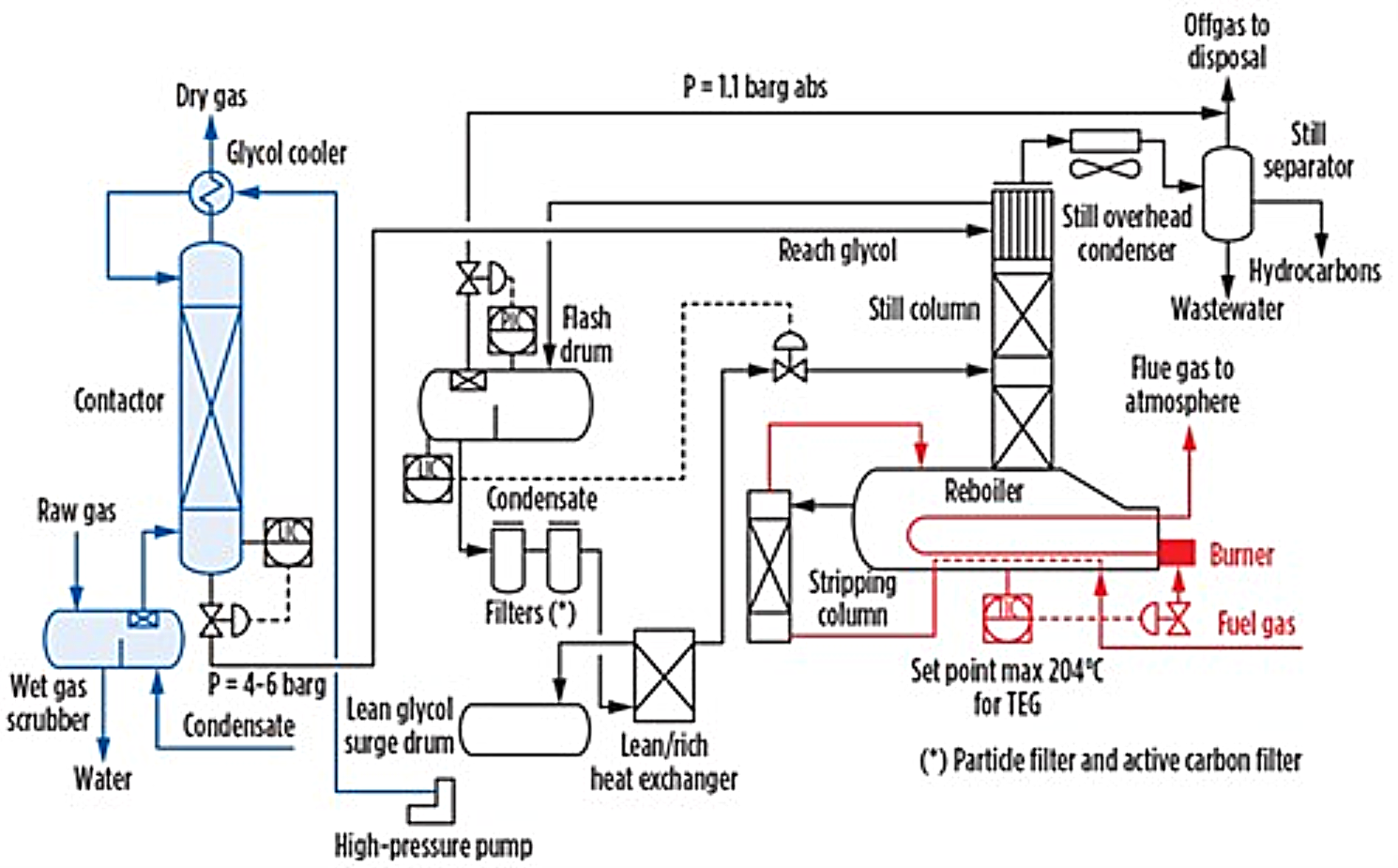Natural Gas from Wells invariably contains Humidity. Gas also becomes wet in the Sweetening Unit of a Gas Processing Facility when it comes into contact with the Aqueous Solution of a Solvent, such as Methyl Diethanolamine (MDEA), used to remove the Acid Gases contained in the Raw Gas.
Water must be removed from Natural Gas because its possible condensation may result in several problems such as Corrosion of Pipelines in the presence of CO2, Slugs formation and Hydrates formation.
In addition to the above challenges, Water Vapor increases Natural Gas volume while decreasing heating value. It can also cause plugging in Cryogenic Plants, which call for a Water dewpoint specification of less than –100°C. These issues can be effectively addressed by removing the Humidity contained in Natural Gas by means of Gas Dehydration Processes.
For the Absorption on Glycol, the most-used Glycols are Diethylene Glycol (DEG) and Triethylene Glycol (TEG). In the Glycol Molecules, Hydroxyl Groups (–OH) and Ether Functional Groups (–CH2-O-CH2–) are present. These Groups give rise to H2 Bonds, which explains their remarkable hygroscopicity and their desiccant properties.
Since their molecular weight is greater than Water, the Glycol Molecules boil at a comparatively higher temperature. Glycols can be easily regenerated by Distillation. It should be observed that both DEG and TEG are subject to thermal degradation; therefore, the Distillation temperatures must be kept below the initial decomposition temperatures—i.e., 328°F (164°C) and 404°F (207°C), respectively—which are lower than their normal boiling points.
Generally, DEG is preferred in Hydrates Inhibition Service where the concentration of the Lean Glycol (i.e., the Glycol coming from the Regeneration Unit) is required to be in the 85%–95% range and can be regenerated at relatively low temperature. TEG is preferred in Gas Dehydration Service.
Dehydration with Glycols is a Regenerative Absorption Process. Generally, it includes a High-Pressure Absorption Column (Contactor) where Gas at high pressure contacts, in countercurrent, with a Stream of Lean Glycol. After absorbing the Water contained in the Gas, the Lean Glycol becomes Rich Glycol—i.e., Water-Diluted Glycol to be sent to the Regeneration Unit.
The Contacting Internals may be Trays, Random Packing or Structured Packing. The latter is preferred for its specific Gas capacity and low Glycol entrainment, which require a comparatively smaller Contactor diameter. Free Water and Condensate possibly entrained in the raw Gas are knocked out in a Separator upstream of the Contactor.
As the Regeneration Step is carried out at near-atmospheric pressure, the High-Pressure Rich Glycol withdrawn from the Contactor Bottom is let down through a Level Control Valve (Picture). The resultant Two-Phase Flow is then routed to the Glycol Flash Drum, where the absorbed Hydrocarbons and part of the Inert Gas are separated from the Rich Glycol.
After Filtration and Pre-Heating, the Rich Glycol is sent to the Still Column for Water-Glycol Separation.
Source; Gas Processing News, Dec 2012, The Natural Gas Dehydration Process












